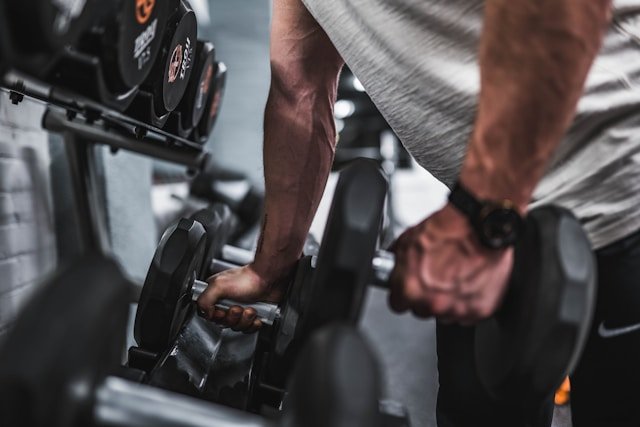In the face of disasters, whether natural or man-made, the need for swift and effective medical relief becomes paramount. This essay explores the indispensable role that it plays in crisis response, encompassing its multifaceted contributions from immediate care to long-term recovery. By delving into various aspects of relief efforts, this discussion underscores the significance of these interventions in mitigating suffering, preventing further loss of life, and fostering resilience within affected communities.
Immediate Medical Care: Saving Lives in the Aftermath of Disaster
Immediate medical care stands as the cornerstone of crisis response efforts. When disasters strike, such as earthquakes, hurricanes, or terrorist attacks, the injured require urgent attention. Medical relief teams, often comprising doctors, nurses, and emergency responders, are swiftly deployed to affected areas. Their primary objective is to stabilize patients, treat injuries, and provide lifesaving interventions amidst chaotic circumstances. By establishing field hospitals, mobile clinics, and triage centers, these teams ensure that critical medical services reach those in need without delay.
Psychological Support: Healing Invisible Wounds
Beyond physical injuries, crises inflict profound psychological trauma on survivors. The loss of loved ones, displacement, and the upheaval of normalcy can leave lasting scars on mental well-being. Recognizing this, medical relief efforts incorporate psychological support services into their response strategies. Trained counselors and mental health professionals offer psychosocial support, counseling, and trauma therapy to help individuals cope with grief, anxiety, and post-traumatic stress disorder (PTSD). By addressing the invisible wounds of crisis, these interventions pave the way for emotional healing and resilience.
Preventing Disease Outbreaks: Safeguarding Public Health
In the aftermath of disasters, compromised infrastructure and overcrowded living conditions create fertile ground for the spread of infectious diseases. Medical associations play a crucial role in preventing disease outbreaks by implementing public health interventions. Vaccination campaigns, distribution of hygiene kits, and sanitation initiatives are key components of these efforts. By promoting hygiene practices and ensuring access to clean water and sanitation facilities, teams mitigate the risk of diseases such as cholera, measles, and COVID-19. In doing so, they safeguard public health and prevent further suffering among crisis-affected populations.
Restoring Healthcare Infrastructure: Building Resilience for the Future
Disasters and conflicts often devastate healthcare infrastructure, depriving communities of essential medical services. Medical relief efforts extend beyond immediate interventions to include the restoration of healthcare infrastructure. Relief organizations collaborate with local authorities to rebuild damaged hospitals, clinics, and health centers. They also invest in strengthening healthcare systems, training healthcare workers, and replenishing medical supplies. By restoring access to healthcare services, these efforts not only address immediate needs but also lay the foundation for long-term recovery and resilience within communities.
Addressing Vulnerable Populations: Upholding Equity and Dignity
In times of crisis, vulnerable populations, including women, children, the elderly, and persons with disabilities, face heightened risks and barriers to accessing healthcare. Team efforts prioritize reaching these marginalized groups, ensuring that their unique needs are addressed. Mobile clinics and outreach programs are often deployed to remote and underserved areas where healthcare access is limited. Furthermore, these groups uphold principles of equity and dignity in their provision of care, regardless of race, religion, or socioeconomic status. By prioritizing the most vulnerable, these interventions uphold the fundamental principles of humanitarianism and promote inclusive recovery.
Collaboration and Coordination: Maximizing Impact through Partnerships
The effectiveness of medical relief efforts hinges on collaboration and coordination among various stakeholders, including governments, UN agencies, NGOs, and local partners. Coordination mechanisms, such as cluster systems and emergency response frameworks, facilitate the pooling of resources, sharing of information, and alignment of efforts. By working together, organizations can maximize their impact, avoid duplication of efforts, and address gaps in healthcare services more effectively. Multisectoral approaches that integrate medical relief with other essential services, such as shelter, food security, and education, ensure a comprehensive and holistic response to crises.
Addressing Specialized Healthcare Needs
In crisis situations, there are often specialized healthcare needs that require targeted attention. Efforts extend beyond general medical care to address specific health concerns such as maternal and child health, chronic diseases, and access to medications. For instance, pregnant women and newborns are particularly vulnerable during emergencies due to disruptions in prenatal care, safe delivery services, and postnatal support. Medical relief teams prioritize maternal and child health interventions, including prenatal screenings, emergency obstetric care, and neonatal resuscitation, to reduce maternal and infant mortality rates. Similarly, individuals with chronic conditions such as diabetes, hypertension, and HIV/AIDS require continuous access to medications and medical monitoring to prevent complications and ensure treatment adherence. Organizations collaborate with local health authorities and pharmaceutical partners to procure and distribute essential medications, medical supplies, and diagnostic equipment tailored to the specific healthcare needs of crisis-affected populations.
Advocating for Health Equity and Humanitarian Principles
Efforts are grounded in humanitarian principles that prioritize the well-being, dignity, and rights of all individuals, regardless of their circumstances. Central to these principles is the commitment to equity, which entails ensuring that everyone has access to healthcare services without discrimination or prejudice. Organizations advocate for health equity by addressing the needs of marginalized and vulnerable populations, including refugees, internally displaced persons, and ethnic minorities, who often face barriers to accessing healthcare due to social, economic, and political factors. Moreover, teams uphold humanitarian principles such as neutrality, impartiality, and independence in their delivery of care, adhering to ethical standards and international humanitarian law. By advocating for health equity and humanitarian principles, medical relief efforts strive to create a more inclusive and just healthcare system that leaves no one behind, even in the midst of crises.
Conclusion
The vital role of medical relief in crisis response cannot be overstated. From providing immediate medical care and psychological support to preventing disease outbreaks and rebuilding healthcare infrastructure, efforts are indispensable in alleviating suffering and fostering resilience within crisis-affected communities. As the world continues to grapple with an array of crises, investing in medical relief efforts and strengthening healthcare systems is essential. By prioritizing the health and well-being of all, we can build more resilient communities capable of withstanding future shocks and crises, ultimately creating a safer and more equitable world for generations to come.




